#agilisaurus
Explore tagged Tumblr posts
Text

''Foot of Agilisaurus'' - except this looks like a foot of a large sauropod? This foot was very tall and it doesn't have the birdy toes Agilisaurus had? Anyone have any ideas whose foot this really is?
Dinosaurukset-kesänäyttely, Tampere-talo
22 notes
·
View notes
Text

Sometimes you open your new markers and must christen them with dinosaur doodles
#artist#artwork#artists on tumblr#drawing#sketch#sketchbook#doodle#markers#colored sketch#dinosaur#dinosaurs#dinosaur art#cartoon#dinosaur cartoon#jurassic period#brachiosaurus#agilisaurus
9 notes
·
View notes
Text

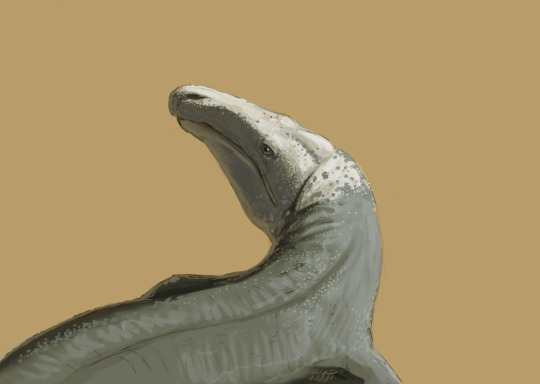
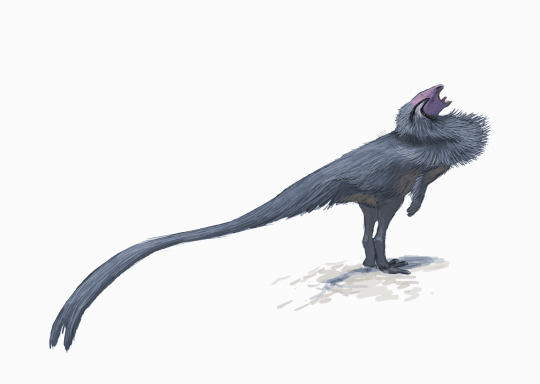
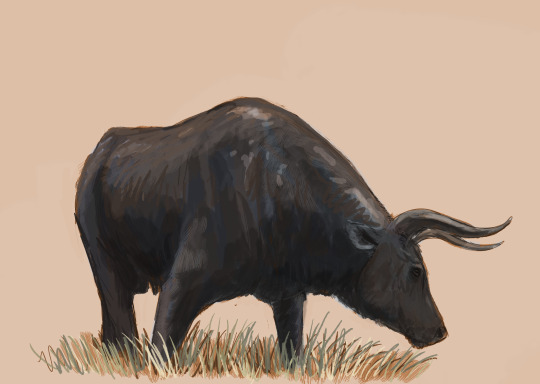
Results from the #paleostream Albertosaurus, Archosaurus, Agilisaurus and an Aurochs.
510 notes
·
View notes
Text
Yandusaurus hongheensis
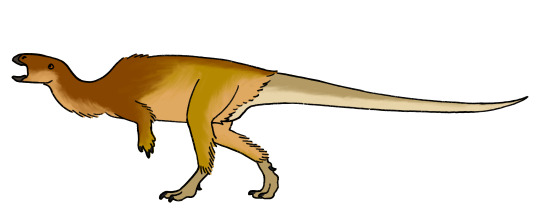
Yandusaurus was a genus of ornithischian dinosaur from the Middle Jurassic. Its type species is Y. hongheensis. The only specimen was found in Jinzidang near the Honghe dam during construction in 1973. The fossil had been accidentally processed partially through the composter but was still intact enough to work with, and it was formally described in 1979.
A second species, Y. multidens, was named in 1983, but this was later reassigned to Agilisaurus in 1992 and then Othnielia (Nanosaurus) in 1996. Eventually, in 2005, it was described as its own genus as Hexinlusaurus multidens.
The fossil consists of the skull, vertebral column, shoulder girdle, frontlimbs and hindlimb, all of which are heavily damaged. The end of the tail, lower jaws, and pelvis were most likely destroyed in the composter. Y. honheensis was bipedal and likely a fast runner with four toes on its hind legs and five on its front legs. It had large eyes and its teeth showed unique patterns of parallel ridges along them.
Original paper: He, X. "A newly discovered ornithopod dinosaur-Yandusaurus from Zigong, China." Contributions to International Exchange of Geology, Part 2 (1979): 116-123.
Wikipedia article: https://en.m.wikipedia.org/wiki/Yandusaurus
#dinosaur#dinosauria#original art#paleontology#yandusaurus#fossil#ornithischia#paleoart#human artist#wikipedia#neornithischia#obscure fossil animals#obscure fossil dinosaurs#obscure fossil tetrapods
88 notes
·
View notes
Text

#Archovember Day 21 - Yangchuanosaurus shangyouensis
While the three known species of Allosaurus were stalking across North America and Europe, China had its own top predator: the metriacanthosaurid carnosaur Yangchuanosaurus shangyouensis. Yangchuanosaurus even survived the Jurassic Allosaurus, living from the Middle Jurassic to the Early Cretaceous. Similar to Ceratosaurus, it had a bony ridge on its nose with multiple hornlets and ridges.

Like Allosaurus, Yangchuanosaurus was the apex predator at the time and would have had a similar diet of large dinosaurs like sauropods and ornithischians. They may have been pack hunters, as a single Yangchuanosaurus would have likely not been able to take down a sauropod alone. In the Shaximiao Formation, these would have been Protognathosaurus, Yuzhoulong, Omeisaurus, Datousaurus, Mamenchisaurus, Daanosaurus, and the club-tailed Shunosaurus. Ornithischian prey would have included stegosaurs like Huayangosaurus and Bashanosaurus, and neornithischians like Agilisaurus, Hexinlusaurus, and Xiaosaurus. Other theropods like Chuandongocoelurus, Xuanhanosaurus, Leshansaurus, Gasosaurus, and Kaijiangosaurus would have been both competitors and prey. It would have also lived alongside basal pterosaurs like Angustinaripterus, and pseudosuchians like Sunosuchus and Hsisosuchus. Life in the Suining Formation would have been similar, with the inclusion of the sauropod Qijianglong in the Early Cretaceous.
#my art#SaritaDrawsPalaeo#Yangchuanosaurus shangyouensis#Yangchuanosaurus#metriacanthosaurid#allosauroid#theropods#saurischians#dinosaurs#archosaurs#archosauromorphs#reptiles#Archovember#Archovember2023
12 notes
·
View notes
Text
Minimocursor phunoiensis - 13th Thai Dinosaur / Thai Runner
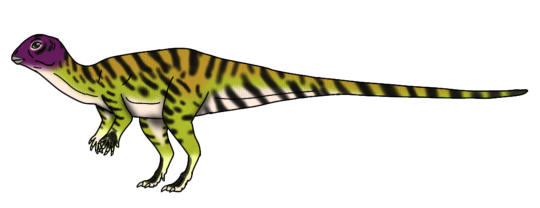
“ Stay away from those people who try to disparage your ambitions. Small minds will always do that, but great minds will give you a feeling that you can become great too. ”
– Mark Twain
Minimocursor phunoiensis, was discovered in the Late Jurassic Phu Kradung Formation at the Phu Noi locality, Kalasin Province, Thailand, a highly productive non-marine fossil vertebrate locality of the Khorat Plateau. It is one of the best-preserved dinosaurs ever found in Southeast Asia.
This study provides a better understanding of the early evolution and taxonomic diversity of ornithischians in Southeast Asia.
Etymology
In Thai word in The Recollections of Queen Arianna events, the common name is Caendeek (แจ้นเด็ก; Cæ̂ndĕk), which means "running kid".
Physiology
The not-fully-grown holotype is believed to be 0.6 metres (2.0 feet) long, similar to Agilisaurus. Larger remnants suggest that the fully grown animal would have been 2 meters (6.6 feet) long.
Abilities
Minimocursor can run on their own by using their feet; they have arms for standing, and they are uncatchable even by you.
References
https://en.wikipedia.org/wiki/Minimocursor
https://www.deviantart.com/ognimdo2002/art/Minimocursor-phunoiensis-971749125
#ognimdo2002#earth responsibly#science fantasy#earth#ibispaint art#art ph#rapunzel's tangled adventure#dinosaur#history#Minimocursor phunoiensis#Minimocursor#thai#thailand#Neornithischia#Neornithischian#ornithischians#Phu Kradung Formation#late jurassic#jurassic#animal#reptile#dinosaur art#paleoart#paleoillustration
4 notes
·
View notes
Video
youtube
Agilisaurus el ágil dinosaurio del Jurásico ia dino world
0 notes
Photo

Jesus walked and talked with dinosaurs. He even had one as a pet sometimes – an Agilisaurus which he kept in his carpentry workshop. We have eyewitness accounts and scientific evidence about this, folks, and it’s all in the Bible.
#painting#acrylic#artoftheday#painting artcollective#artwork#artcollective#artnerd#sadahire#flomm#flommist#beermat#beercoaster#bierdeckel#jesus#dinosaurs#eyewitness#evidence#bible#Agilisaurus#proof#co-existance#alternatefacts#science
3 notes
·
View notes
Photo

11/30/21 Agilisaurus
112 notes
·
View notes
Note
you like dinos? name every dino
Aardonyx Abdarainurus Abelisaurus Abrictosaurus Abrosaurus Abydosaurus Acantholipan Acanthopholis Achelousaurus Acheroraptor Achillesaurus Achillobator Acristavus Acrocanthosaurus Acrotholus Adamantisaurus Adasaurus Adelolophus Adeopapposaurus Adratiklit Adynomosaurus Aegyptosaurus Aeolosaurus Aeolosaurus Aepyornithomimus Aerosteon Afromimus Afrovenator Agathaumas Agilisaurus Agrosaurus Agujaceratops Agujaceratops Agustinia Ahshislepelta Ajkaceratops Ajnabia Akainacephalus Alamitornis Alaskacephale Albalophosaurus Albertaceratops Albertadromeus Albertavenator Albertonykus Albertosaurus Albinykus Alcmonavis Alcovasaurus Alectrosaurus Aletopelta Algoasaurus Alioramus Alioramus Allosaurus Allosaurus Allosaurus Almas Alnashetri Altirhinus Altispinax Alvarezsaurus Alxasaurus Amanzia Amargasaurus Amargatitanis Amazonsaurus Ambiortus Ambopteryx Ampelosaurus Amphicoelias Amtocephale Amurosaurus Amygdalodon Anabisetia Analong Anasazisaurus Anchiceratops Anchiornis Anchisaurus Andesaurus Angolatitan Angulomastacator Anhuilong Aniksosaurus Animantarx Ankylosaurus Anodontosaurus Anomalipes Anoplosaurus Anserimimus Antarcticavis Antarctopelta Antarctosaurus Antarctosaurus Antarctosaurus Antarctosaurus Antetonitrus Antrodemus Anzu Aoniraptor Aorun Apatoraptor Apatornis Apatosaurus Apatosaurus Appalachiosaurus Apsaravis Aquilarhinus Aquilops Arackar Aragosaurus Aralosaurus Aratasaurus Archaeoceratops Archaeoceratops Archaeodontosaurus Archaeopteryx Archaeopteryx Archaeorhynchus Archaeornithoides Archaeornithomimus Archaeornithomimus Archaeornithura Arcovenator Arcusaurus Arenysaurus Argentinosaurus Argyrosaurus Aristosuchus Arkansaurus Arkharavia Arrhinoceratops Arrudatitan Asfaltovenator Asiaceratops Asiaceratops Asiahesperornis Asiatosaurus Asiatosaurus Astrophocaudia Asylosaurus Atacamatitan Atlantosaurus Atlantosaurus Atlasaurus Atlascopcosaurus Atrociraptor Atsinganosaurus Aublysodon Aucasaurus Augustynolophus Auroraceratops Aurornis Australodocus Australotitan Australovenator Austrocheirus Austroposeidon Austroraptor Austrosaurus Avaceratops Aviatyrannis Avimimus Avimimus Avisaurus
Baalsaurus Bactrosaurus Bactrosaurus Bagaceratops Bagaraatan Bagualia Bagualosaurus Bahariasaurus Bainoceratops Bainoceratops Bajadasaurus Balaur Bambiraptor Banji Bannykus Baotianmansaurus Baptornis Barapasaurus Barilium Barosaurus Barrosasaurus Barsboldia Baryonyx Bashanosaurus Batyrosaurus Batyrosaurus Baurutitan Bauxitornis Bayannurosaurus Beg Beibeilong Beiguornis Beipiaognathus Beipiaosaurus Beishanlong Bellusaurus Berberosaurus Berthasaura Bicentenaria Bienosaurus Bissektipelta Bistahieversor Blasisaurus Blikanasaurus Bohaiornis Bolong Boluochia Bonapartenykus Bonapartenykus Bonapartesaurus Bonatitan Bonitasaura Borealopelta Borealosaurus Boreonykus Borogovia Bothriospondylus Brachiosaurus Brachyceratops Brachylophosaurus Brachytrachelopan Bradycneme Brasilotitan Bravasaurus Bravoceratops Breviceratops Brighstoneus Brodavis Brodavis Brodavis Brodavis Brohisaurus Brontomerus Brontosaurus Buitreraptor Burianosaurus Buriolestes Byronosaurus
Caenagnathasia Caenagnathus Caihong Calamosaurus Callovosaurus Camarasaurus Camarasaurus Camarasaurus Camarasaurus Camarillasaurus Camelotia Camposaurus Camptodontornis Camptosaurus Campylodoniscus Canadaga Canardia Carcharodontosaurus Carcharodontosaurus Cardiodon Carnotaurus Caseosaurus Cathartesaura Caudipteryx Caudipteryx Cedarosaurus Cedarpelta Cedrorestes Centrosaurus Ceramornis Cerasinops Ceratonykus Ceratops Ceratosaurus Ceratosaurus Ceratosaurus Ceratosuchops Cerebavis Cetiosauriscus Cetiosaurus Changchengornis Changchunsaurus Changmiania Changyuraptor Changzuiornis Chaoyangia Chaoyangsaurus Charonosaurus Chasmosaurus Chasmosaurus Chasmosaurus Chebsaurus Chenanisaurus Chialingosaurus Chiappeavis Chiayusaurus Chiayusaurus Chilantaisaurus Chilesaurus Chindesaurus Chingkankousaurus Chinshakiangosaurus Chirostenotes Choconsaurus Chondrosteosaurus Chongmingia Choyrodon Chromogisaurus Chuandongocoelurus Chuanjiesaurus Chuanqilong Chubutisaurus Chungkingosaurus Chupkaornis Chuxiongosaurus Cimolopteryx Cimolopteryx Citipati Citipes Claosaurus Coahuilaceratops Coelophysis Coelurus Colepiocephale Coloradisaurus Comahuesaurus Compsognathus Compsosuchus Concavenator Conchoraptor Concornis Condorraptor Confuciusornis Confuciusornis Confuciusornis Confuciusornis Convolosaurus Coronosaurus Corythoraptor Corythosaurus Corythosaurus Craspedodon Craterosaurus Cretaaviculus Crichtonpelta Crichtonsaurus Cristatusaurus Crittendenceratops Cruxicheiros Cryolophosaurus Cumnoria
Dacentrurus Daemonosaurus Dakotadon Dakotaraptor Dalianraptor Daliansaurus Dandakosaurus Daspletosaurus Daspletosaurus Datanglong Datonglong Datousaurus Daurlong Daxiatitan Deinocheirus Deinodon Deinonychus Deltadromeus Demandasaurus Denversaurus Diabloceratops Diamantinasaurus Dicraeosaurus Dilong Dilophosaurus Diluvicursor Dineobellator Dinheirosaurus Diplodocus Diplodocus Diplodocus Dongbeititan Dongyangopelta Dongyangosaurus Draconyx Dracoraptor Dracovenator Dreadnoughtus Dromaeosauroides Dromaeosaurus Dromiceiomimus Drusilasaura Dryosaurus Dryptosaurus Dubreuillosaurus Duriatitan Duriavenator Dynamoterror Dyoplosaurus Dysalotosaurus Dysganus Dysganus Dysganus Dysganus Dyslocosaurus Dzharaonyx Dzharatitanis
Echinodon Edmontonia Edmontonia Edmontosaurus Edmontosaurus Efraasia Einiosaurus Ekrixinatosaurus Elaltitan Elaphrosaurus Elmisaurus Elopteryx Elrhazosaurus Emausaurus Enaliornis Enaliornis Enaliornis Enantiophoenix Enigmosaurus Eoabelisaurus Eocarcharia Eoconfuciusornis Eocursor Eodromaeus Eogranivora Eolambia Eomamenchisaurus Eoraptor Eosinopteryx Eotrachodon Eotriceratops Eotyrannus Eousdryosaurus Epachthosaurus Epanterias Epichirostenotes Epidexipteryx Equijubus Erectopus Erketu Erliansaurus Erlikosaurus Erythrovenator Eshanosaurus Eucamerotus Eucercosaurus Eucnemesaurus Eucnemesaurus Euhelopus Euoplocephalus Europasaurus Europatitan Europelta Euskelosaurus Eustreptospondylus Evgenavis Evgenavis
Falcarius Falcatakely Ferganasaurus Ferrisaurus Foraminacephale Fosterovenator Fostoria Fruitadens Fukuipteryx Fukuiraptor Fukuisaurus Fukuititan Fukuivenator Fulgurotherium Fumicollis Fushanosaurus Fusuisaurus Futalognkosaurus Fylax
Galeamopus Galeamopus Galleonosaurus Gallimimus Gallornis Galvesaurus Gannansaurus Gansus Gansus Ganzhousaurus Gargantuavis Gargoyleosaurus Garrigatitan Garudimimus Gasosaurus Gasparinisaura Gastonia Gastonia Geminiraptor Genusaurus Genyodectes Geranosaurus Gettyia Gideonmantellia Giganotosaurus Gigantoraptor Gigantspinosaurus Gilmoreosaurus Gilmoreosaurus Gilmoreosaurus Gilmoreosaurus Giraffatitan Glacialisaurus Glishades Glyptodontopelta Gnathovorax Gobihadros Gobioolithus Gobioolithus Gobipteryx Gobiraptor Gobisaurus Gobititan Gobivenator Gojirasaurus Gondwanatitan Gongpoquansaurus Gongxianosaurus Gorgosaurus Goyocephale Graciliceratops Graciliraptor Gravitholus Gryphoceratops Gryposaurus Gryposaurus Gryposaurus Gryposaurus Guaibasaurus Gualicho Guanlong Guemesia
Hadrosaurus Haestasaurus Hagryphus Halimornis Halszkaraptor Hamititan Hanssuesia Haplocanthosaurus Haplocanthosaurus Haplocheirus Harpymimus Haya Heptasteornis Herrerasaurus Hesperonychus Hesperornis Hesperornis Hesperornis Hesperornis Hesperornis Hesperornis Hesperornis Hesperornis Hesperornis Hesperornis Hesperornis Hesperornithoides Hesperosaurus Heterodontosaurus Hexing Hexinlusaurus Heyuannia Hippodraco Histriasaurus Hollanda Homalocephale Hongshanornis Hoplitosaurus Horshamosaurus Hortalotarsus Huabeisaurus Hualianceratops Huallasaurus Huanansaurus Huanghetitan Huangshanlong Huaxiagnathus Huayangosaurus Hudiesaurus Huehuecanauhtlus Huinculsaurus Hulsanpes Hungarosaurus Hylaeosaurus Hypacrosaurus Hypacrosaurus Hypselosaurus Hypselospinus Hypsilophodon
Iaceornis Iberospinus Ibirania Ichthyornis Ichthyovenator Ignavusaurus Iguanacolossus Iguanodon Iguanodon Iguanodon Ilokelesia Imperobator Incisivosaurus Indosaurus Indosuchus Ingentia Intiornis Invictarx Irisosaurus Irritator Isaberrysaura Isanosaurus Isasicursor Ischioceratops Isisaurus Issi Itapeuasaurus Itemirus Iuticosaurus Iyuku
Jainosaurus Jakapil Jaklapallisaurus Janenschia Jaxartosaurus Jeholornis Jeholornis Jeholornis Jeholosaurus Jeyawati Jianchangornis Jianchangosaurus Jiangjunosaurus Jiangshanosaurus Jiangxisaurus Jianianhualong Jibeinia Jinbeisaurus Jinfengopteryx Jingshanosaurus Jinguofortis Jintasaurus Jinyunpelta Jinzhousaurus Jiuquanornis Jiutaisaurus Jixiangornis Jobaria Judiceratops Judinornis Juratyrant Juravenator
Kaatedocus Kaijiangosaurus Kaijutitan Kakuru Kamuysaurus Kangnasaurus Kansaignathus Kaririavis Karongasaurus Katepensaurus Kayentavenator Kazaklambia Kelmayisaurus Kelumapusaura Kentrosaurus Kerberosaurus Khaan Khinganornis Kholumolumo Khulsanurus Kileskus Kinnareemimus Klamelisaurus Kol Kompsornis Kookne Koparion Koreaceratops Koreanosaurus Koshisaurus Kosmoceratops Kotasaurus Kritosaurus Kryptops Kulceratops Kulindadromeus Kunbarrasaurus Kundurosaurus Kuru Kurupi Kuszholia
Labocania Laevisuchus Laiyangosaurus Lajasvenator Lamarqueavis Lamarqueavis Lamarqueavis Lambeosaurus Lambeosaurus Lambeosaurus Lanzhousaurus Lapampasaurus Laplatasaurus Lapparentosaurus Laquintasaura Latenivenatrix Latirhinus Latirhinus Lavocatisaurus Leaellynasaura Ledumahadi Leinkupal Leonerasaurus Lepidus Leptoceratops Leptorhynchos Leshansaurus Lesothosaurus Lessemsaurus Levnesovia Lexovisaurus Leyesaurus Liaoceratops Liaoningosaurus Liaoningotitan Liaoningvenator Ligabueino Ligabuesaurus Liliensternus Limaysaurus Limenavis Limusaurus Lingwulong Lingyuanosaurus Linhenykus Linheraptor Linhevenator Lirainosaurus Liubangosaurus Llukalkan Lohuecotitan Longicrusavis Longipteryx Longirostravis Longusunguis Lophorhothon Lophostropheus Loricatosaurus Losillasaurus Lourinhasaurus Luanchuanraptor Lucianovenator Lufengosaurus Lufengosaurus Luoyanggia Lurdusaurus Lusotitan Lusovenator Lycorhinus Lythronax
Maaqwi Machairasaurus Machairoceratops Macrocollum Macrogryphosaurus Macrurosaurus Macrurosaurus Magnamanus Magnapaulia Magnosaurus Magyarosaurus Magyarosaurus Mahakala Mahuidacursor Maiasaura Maip Majungasaurus Malarguesaurus Malawisaurus Maleevus Mamenchisaurus Mamenchisaurus Mamenchisaurus Mamenchisaurus Mamenchisaurus Mamenchisaurus Manidens Mantellisaurus Mapusaurus Maraapunisaurus Marmarospondylus Marshosaurus Martharaptor Masiakasaurus Massospondylus Massospondylus Matheronodon Maxakalisaurus Mbiresaurus Medusaceratops Megalosaurus Megapnosaurus Megapnosaurus Megaraptor Mei Melanorosaurus Mendozasaurus Menefeeceratops Mengciusornis Menucocelsior Meraxes Mercuriceratops Meroktenos Metriacanthosaurus Microceratus Microceratus Micropachycephalosaurus Microraptor Microraptor Microraptor Microvenator Mierasaurus Minmi Minotaurasaurus Miragaia Mirarce Mirischia Mnyamawamtuka Moabosaurus Mochlodon Mochlodon Mongolostegus Monkonosaurus Monolophosaurus Mononykus Montanoceratops Morelladon Moros Morrosaurus Mosaiceratops Murusraptor Mussaurus Muttaburrasaurus Muyelensaurus Mymoorapelta Mystiornis
Naashoibitosaurus Nambalia Nankangia Nanningosaurus Nanosaurus Nanshiungosaurus Nanuqsaurus Nanyangosaurus Narambuenatitan Narindasaurus Nasutoceratops Natovenator Navajoceratops Nebulasaurus Nedcolbertia Nedoceratops Neimongosaurus Nemegtomaia Nemegtonykus Neogaeornis Neosodon Neovenator Neuquenornis Neuquenraptor Ngwevu Nhandumirim Niebla Nigersaurus Ningyuansaurus Ninjatitan Niobrarasaurus Nipponosaurus Noasaurus Nodocephalosaurus Nodosaurus Nomingia Nopcsaspondylus Normanniasaurus Notatesseraeraptor Nothronychus Notoceratops Notocolossus Notohypsilophodon Nqwebasaurus Nullotitan Nuthetes
Oceanotitan Ohmdenosaurus Ojoceratops Ojoraptorsaurus Oksoko Olorotitan Omeisaurus Omeisaurus Omeisaurus Omeisaurus Omeisaurus Omeisaurus Omeisaurus Omeisaurus Omnivoropteryx Ondogurvel Oohkotokia Oplosaurus Orkoraptor Ornatops Ornitholestes Ornithomimus Ornithomimus Ornithomimus Ornithopsis Orodromeus Orthomerus Oryctodromeus Osmakasaurus Ostafrikasaurus Ostromia Ouranosaurus Overoraptor Overosaurus Oviraptor Owenodon Oxalaia Ozraptor
Pachycephalosaurus Pachyrhinosaurus Pachyrhinosaurus Pachyrhinosaurus Padillasaurus Palaeopteryx Palintropus Paludititan Pampadromaeus Pamparaptor Panamericansaurus Pandoravenator Panguraptor Panoplosaurus Panphagia Pantydraco Papiliovenator Parabohaiornis Parahesperornis Parahesperornis Parahongshanornis Paralitherizinosaurus Paranthodon Parapengornis Pararhabdodon Parasaurolophus Parasaurolophus Parasaurolophus Paraxenisaurus Pareisactus Parksosaurus Paronychodon Paronychodon Parvicursor Pasquiaornis Pasquiaornis Patagonykus Patagonykus Patagopteryx Patagosaurus Patagotitan Pawpawsaurus Pectinodon Pedopenna Pegomastax Pelecanimimus Pellegrinisaurus Peloroplites Pelorosaurus Pendraig Penelopognathus Pengornis Pentaceratops Perijasaurus Petrobrasaurus Phaedrolosaurus Philovenator Phuwiangosaurus Phuwiangvenator Phyllodon Piatnitzkysaurus Pilmatueia Pinacosaurus Pinacosaurus Piscivoravis Pitekunsaurus Piveteausaurus Planicoxa Plateosaurus Plateosaurus Plateosaurus Platypelta Plesiohadros Pneumatoraptor Poekilopleuron Polacanthus Polarornis Polyodontosaurus Polyonax Potamornis Powellvenator Pradhania Prenocephale Prenoceratops Priconodon Proa Probactrosaurus Probrachylophosaurus Proceratosaurus Procompsognathus Proornis Propanoplosaurus Prosaurolophus Protarchaeopteryx Protoceratops Protoceratops Protognathosaurus Protohadros Psittacosaurus Psittacosaurus Psittacosaurus Psittacosaurus Psittacosaurus Psittacosaurus Psittacosaurus Psittacosaurus Psittacosaurus Psittacosaurus Psittacosaurus Psittacosaurus Pterospondylus Puertasaurus Pukyongosaurus Pulanesaura Punatitan Pycnonemosaurus Pyroraptor
Qantassaurus Qianzhousaurus Qiaowanlong Qijianglong Qinlingosaurus Qiupalong Qiupanykus Quetecsaurus Quilmesaurus
Rahiolisaurus Rahonavis Rajasaurus Rapator Rapaxavis Rapetosaurus Raptorex Ratchasimasaurus Rativates Rayososaurus Rebbachisaurus Regaliceratops Regnosaurus Rhabdodon Rhabdodon Rhadinosaurus Rhinorex Rhoetosaurus Rhomaleopakhus Riabininohadros Rinchenia Rinconsaurus Riojasaurus Riparovenator Rugocaudia Rugops Rukwatitan Ruyangosaurus
Sahaliyania Saichania Saltriovenator Sanjuansaurus Sanpasaurus Santanaraptor Sanxiasaurus Sapeornis Sarahsaurus Sarcosaurus Sarmientosaurus Saturnalia Saurolophus Saurolophus Sauroniops Sauropelta Saurophaganax Sauroplites Sauroposeidon Saurornithoides Saurornitholestes Saurornitholestes Savannasaurus Scansoriopteryx Scelidosaurus Schizooura Schleitheimia Scipionyx Sciurumimus Scolosaurus Scolosaurus Scutellosaurus Secernosaurus Sefapanosaurus Segisaurus Segnosaurus Seitaad Sektensaurus Serendipaceratops Serikornis Shamosaurus Shanag Shantungosaurus Shanweiniao Shanxia Shanyangosaurus Shaochilong Shengjingornis Shenqiornis Shenzhousaurus Shidaisaurus Shingopana Shishugounykus Shixinggia Shri Shuangbaisaurus Shuangmiaosaurus Shunosaurus Shuvuuia Siamodon Siamosaurus Siamotyrannus Siamraptor Siats Sibirotitan Sierraceratops Sigilmassasaurus Silvisaurus Similicaudipteryx Sinocalliopteryx Sinocephale Sinoceratops Sinornithoides Sinornithomimus Sinornithosaurus Sinornithosaurus Sinosauropteryx Sinosaurus Sinosaurus Sinotyrannus Sinovenator Sinraptor Sinraptor Sinusonasus Sirindhorna Skorpiovenator Smitanosaurus Songlingornis Sonidosaurus Sonorasaurus Soriatitan Soroavisaurus Spectrovenator Sphaerotholus Sphaerotholus Sphaerotholus Spiclypeus Spinophorosaurus Spinops Spinosaurus Spinostropheus Staurikosaurus Stegoceras Stegoceras Stegopelta Stegosaurus Stegosaurus Stegosaurus Stegouros Stellasaurus Stenonychosaurus Stenopelix Stokesosaurus Streptospondylus Struthiomimus Struthiosaurus Struthiosaurus Struthiosaurus Styracosaurus Styracosaurus Suchomimus Suchosaurus Suchosaurus Sulcavis Supersaurus Suskityrannus Suuwassea Suzhousaurus Syngonosaurus Szechuanosaurus
Tachiraptor Talarurus Talenkauen Talos Tamarro Tambatitanis Tangvayosaurus Tanius Tanius Tanycolagreus Taohelong Tapuiasaurus Tarbosaurus Tarchia Tarchia Tarchia Tastavinsaurus Tatankacephalus Tataouinea Tatisaurus Taurovenator Tawa Tazoudasaurus Tehuelchesaurus Telmatosaurus Tendaguria Tengrisaurus Tenontosaurus Tenontosaurus Teratophoneus Terminocavus Tethyshadros Texacephale Texasetes Thanatotheristes Thanos Thecocoelurus Thecodontosaurus Theiophytalia Therizinosaurus Thescelosaurus Tianyulong Tianyuornis Tianyuraptor Tianzhenosaurus Tienshanosaurus Timimus Timurlengia Tingmiatornis Titanoceratops Titanosaurus Titanosaurus Tlatolophus Tochisaurus Tonganosaurus Tongtianlong Tornieria Torosaurus Torosaurus Torvosaurus Torvosaurus Torvosaurus Tototlmimus Tralkasaurus Transylvanosaurus Tratayenia Traukutitan Triceratops Triceratops Trierarchuncus Trigonosaurus Trinisaura Triunfosaurus Troodon Tsaagan Tsagantegia Tsintaosaurus Tuebingosaurus Tugulusaurus Tuojiangosaurus Turanoceratops Turiasaurus Tylocephale Tyrannosaurus Tyrannotitan
Uberabatitan Ubirajara Udanoceratops Ultrasaurus Ulughbegsaurus Unaysaurus Unenlagia Unenlagia Unescoceratops Unquillosaurus Urbacodon Utahceratops Utahraptor Uteodon
Vahiny Valdoraptor Valdosaurus Vallibonavenatrix Variraptor Vayuraptor Vectaerovenator Vectiraptor Vegavis Velafrons Velocipes Velociraptor Velociraptor Velocisaurus Venenosaurus Vescornis Vespersaurus Veterupristisaurus Viavenator Vitakridrinda Volgatitan Volkheimeria Vorona Vouivria Vulcanodon
Wakinosaurus Walgettosuchus Wamweracaudia Wannanosaurus Weewarrasaurus Wellnhoferia Wendiceratops Wiehenvenator Wintonotitan Wuerhosaurus Wuerhosaurus Wulagasaurus Wulatelong Wulong
Xenoceratops Xenoposeidon Xenotarsosaurus Xianshanosaurus Xiaosaurus Xiaotingia Xingtianosaurus Xingxiulong Xinjiangovenator Xinjiangtitan Xiongguanlong Xixianykus Xixiasaurus Xiyunykus Xuanhanosaurus Xuanhuaceratops Xunmenglong Xuwulong
Yamaceratops Yamatosaurus Yandangornis Yangavis Yangchuanosaurus Yangchuanosaurus Yanornis Yanornis Yaverlandia Yehuecauhceratops Yi Yimenosaurus Yingshanosaurus Yinlong Yixianornis Yixianosaurus Yizhousaurus Yongjinglong Ypupiara Yuanchuavis Yuanmousaurus Yueosaurus Yulong Yunganglong Yunmenglong Yunnanosaurus Yunnanosaurus Yunnanosaurus Yunyangosaurus Yurgovuchia Yutyrannus Yuxisaurus
Zalmoxes Zalmoxes Zanabazar Zapalasaurus Zaraapelta Zby Zephyrosaurus Zhanghenglong Zhenyuanlong Zhongjianornis Zhongjianosaurus Zhongornis Zhongyuansaurus Zhouornis Zhuchengceratops Zhuchengtyrannus Ziapelta Zigongosaurus Zizhongosaurus Zuniceratops Zuolong Zuoyunlong Zupaysaurus Zuul
476 notes
·
View notes
Note
Whats your favorite dinosaur?
oogh def have to go with agilisaurus!! theyre so freakish creature coded and i fucking LOVE that for them
3 notes
·
View notes
Note
Do nocturnal bottleneck in mammals due to competition with dinosaurs even make sense, given many dinosaurs were nocturnal, especially small carnivores like dromaeosaurs?
I have my doubts that that many dinosaurs were nocturnal. Most of it comes from this one study, based on sclerotic ring morphology, and they found only one non-avialan dinosaur (Agilisaurus) out of 19 to be diurnal. That strikes me as a little off, given the same paper notes there’s roughly an equal split between diurnal and nocturnal amniotes today (and that’s factoring in all the nocturnal lizards and mammals, not just the megafauna). Most strikingly, Microraptor was inferred as nocturnal. Microraptor was later discovered to have iridescent plumage. Iridescence literally isn’t visible without light, and for this reason no nocturnal birds have iridescent plumage. Even sitting in the shade will do a number on how visible iridescence is:
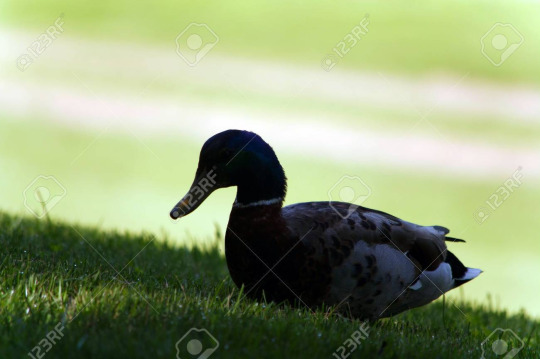
That being said, I have a gut feeling the nocturnal bottleneck is a wee bit overstated. We can’t use sclerotic ring morphology to directly infer activity patterns in Mesozoic mammals, because mammals don’t have them. We can only infer from living mammals, and that inference does suggest ancestral nocturnality. But the average Mesozoic mammal was smaller than most terrestrial dinosaurs (gobiconodonts are an outlier adn should not be counted), so I wouldn’t expect a ton of competition regardless of activity patterns. The evidence does point towards a nocturnal bottleneck, but I’d expect there to be at least some diurnal Mesozoic mammals.
So why do so many living mammals show adaptations for ancestral nocturnality? Because nocturnal mammals would have been better-equipped to survive the K-Pg extinction. The asteroid impact would have caused a period of global darkness and coolness afterwards. This was very bad for plants and diurnal animals that depended on them. For nocturnal animals such as stem-placentals, not much would have changed.
10 notes
·
View notes
Photo
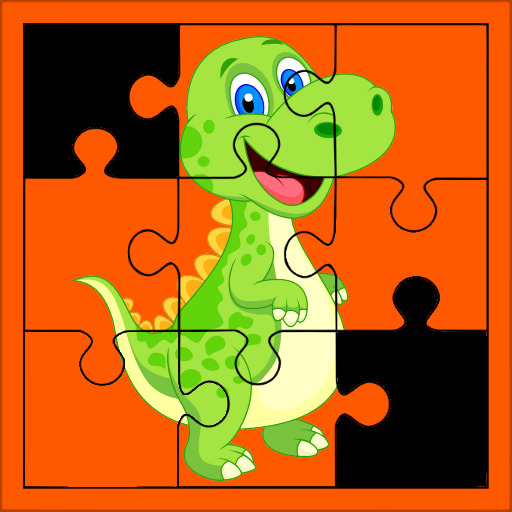
Dinosaur Puzzles & Jurassic Jigsaw - Rompecabezas
Dinosaur Puzzles & Jurassic Jigsaw - Rompecabezas
Game Dinosaur Puzzles & Jurassic Jigsaw - Rompecabezas là dòng game PuzzleEducation
Giới thiệu Dinosaur Puzzles & Jurassic Jigsaw - Rompecabezas
Dinosaur Puzzles is an excellent easy game way to develop Kids logic skills and help them to recognize shapes and patterns. This educational app about Dinosaurs contains 64 images completely free. We made a careful selection of Cute and Beautiful images related to: Achelousaurus, Achillobator, Acrocanthosaurus, Dinosaurio, Aegyptosaurus, Afrovenator, Agilisaurus, Alamosaurus, Albertaceratops,Allosaurus, Ammosaurus, Aralosaurus, Archaeopteryx, Aucasaurus and many more. The Challenge starts when your kid has to locate and select little pieces to solve a JigSaw Puzzle. While your Kid plays this game his brain will develop skills that help him to recognize shapes and how fit into a big picture. The main objective of this App is to entertain and develop the logic skills of your kids while they play. Jigsaw Puzzles are designed for kids and parents to have fun together. Dinosaur Puzzles Version 1 . Year 2021 Month January Day Tuesday 12
Download APK
Tải APK ([app_filesize]) #gamehayapk #gameandroid #gameapk #gameupdate
0 notes
Note
Hmmmm probably leaellynasaura or agilisaurus? I think they're both just silly shaped creatures :D
yoo enjoy your food :]
How’s it hangin areus <3 ?
Hi solar :DD I'm vibing I've been writing a bit and doing school stuff, how are you?
6 notes
·
View notes
Photo

This #agilisaurus hasn't slept in three weeks but just look at the gold it found! #dinovember2017 #drawdinovember #illustration #illustrator #adobe #adobeillustrator #practice #gold #fossils http://ift.tt/2hRJUrA
0 notes
Photo
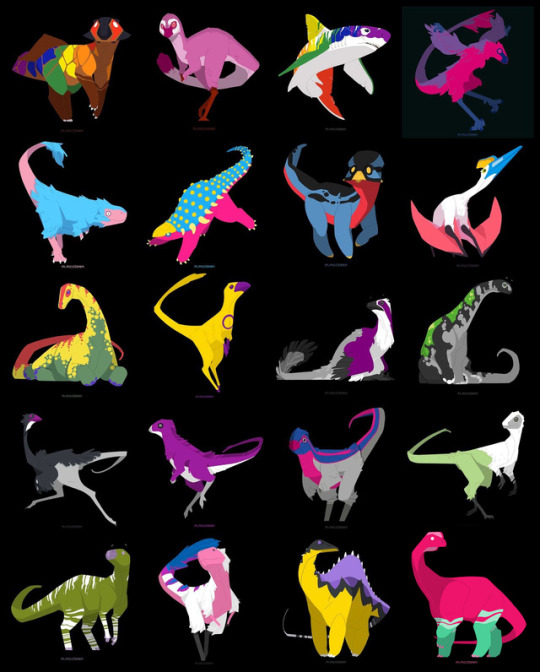
All the Pride Dinos from 2018.
Line 1 from Left to Right: Pride-acosaurus, Lesbian-asaura, Me-gay-lodon, Bi-lociraptor
Line 2: Trans-saurus Rex, Pan-oplosaurus, Poly-ptoceratops, Queer-zalcoatlus
Line 3: Questioning-saurus, Sinocallio-intersex, Ace-eroraptor, Aro-tosaurus
Line 4: Demi-ceiomimus, Gray-gilisaurus, Kulind-androgynous, Agender-oraptor
Line 5: Genderqueer-anadon, Genderfluid-osuchus, Non-Binary-bbachisaurus, Abrosaurus
[Description: Various dinosaurs colored in accordance with different pride flags atop a black background. More detailed descriptions below the cut]
[Dinosaurs listed from left to right.
Line 1, Dinosaur 1: A Psittacosaurus colored like the pride flag. It is standing upright facing just forward and to the left. It has a brown base that gets darker towards the bottom of its feet. And it has spots colored like the rainbow starting with red at the head and ending with purple at the tail.
Line 1, Dinosaur 2: A feathered Leaellynasaura colored like the lesbian pride flag. Its body is angled to the audience’s left with its face towards the viewer. Its tail is curled behind it. Its feathers mostly pink, with a lighter underbelly and a dark spot on it’s tail.
Line 1, Dinosaur 3: A Megalodon colored with the gay pride colors. It is swimming towards the viewer’s right. Its underbelly is white and it has stripes arranged in a rainbow along it’s back.
Line 1, Dinosaur 4: A feathered Velociraptor colored with the bisexual pride colors. It is in profile with one foot on the ground and another raised up. Its arms are stretched out and its tail curves behind it. The legs are blue, the underbelly is hot pink, and its back is purple.
…
Line 2, Dinosaur 1: A feathered Tyrannosaurus Rex colored with the trans pride colors. The dinosaur is in profile facing the viewer’s right with its head low and its tail curved high behind it. Its body is mostly blue with a pink tail, feet, and coloring around the eyes and nose.
Line 2, Dinosaur 2: A Panoplosaurus colored with the pansexual pride colors. It is jump/running with its front legs low to the ground and its back legs high in the air. The dinosaur is facing the viewer’s left. Its legs and underbelly are hot pink with a yellow scaled head, followed by blue scales along the back dotted with pale yellow spikes.
Line 2, Dinosaur 3: A Leptoceratops colored with the polyamory pride colors. The dinosaur’s body is angled to the viewer’s right while the face is forward and to the left. Three legs are on the ground (though one back leg is mostly hidden) and the fourth front leg is held up. It has a red underbelly and and blue coloring along its back. There are black spots and stripes along it’s eyes, crest, spine.
Line 2, Dinosaur 4: Not technically a dinosaur. A feathered Quetzalcoatlus colored in the queer pride colors. The dinosaur’s body and head are facing the viewer’s right. Its hind legs are tucked behind its wings in a crouched position. Its head is looking upwards. The body is mostly white with black legs, pink wings, a blue beak, a yellow crest, and a small ring of bright green around its eye.
…
Line 3, Dinosaur 1: A Qauaesitosaurus with questioning pride colors. It is lying down with its front legs forward and its back legs reclined towards the viewer’s left. It has a long neck and its face is looking towards the viewer’s left. Its tail curves up and behind its body. It has a green underbelly with yellow spots coming around its back and red spots along its spine and tail.
Line 3, Dinosaur 2: A feathered Sinocalliopteryx with intersex pride colors. It is a raptor like dinosaur with its body and face looking towards the viewer’s right. It is mostly yellow with a purple beak, hands, feet, and a purple circle on its chest.
Line 3, Dinosaur 3: A feathered Acheroraptor colored with asexual pride colors. The raptor’s body is mostly in profile towards the viewer’s right, but its neck and face are turned towards the viewer’s left. It is seated on it’s haunches with two small wings mostly covering its hind legs. The underbelly is white while a stripe of purple goes across its shoulder blades down both wings and then up the neck towards the eyes. Its back end and tail is gray. Its beak, wing tips, legs, and the end of its tail are all black.
Line 3, Dinosaur 4: A seated Rhoetosaurus colored with aromantic pride colors. This is a long necked dinosaur that has its back end seated and its tail curved behind its body. One front most leg is picked up slightly. The dinosaur is facing the viewer’s right. Its underbelly is gray with black along its back. Its spine has spots of a dark and light green.
…
Line 4, Dinosaur 1: A half feathered Dromiceiomimus colored with the demisexual pride colors. The ostrich-like dinosaur is running towards the viewer’s left but its head is turned to look behind it (the veiwer’s right) Its legs and tail are unfeathered and light gray. Its head, neck, back and arms are covered in black feathers that end just as the tail begins. There is a spot of white under its chin, and its eyes and beak are purple.
Line 4, Dinosaur 2: A feathered Agilisaurus colored with graysexual pride colors. The dinosaur looks to be in mid hop and in profile. Its body faces the viewer’s left. The underbelly is white, while most of the rest of the body is purple. Its legs, eye, and beak are gray and its eye is ringed in black.
Line 4, Dinosaur 3: A feathered Kulindadromeus colored in the androgynous pride colors. The dinosaur is facing towards the viewer’s left with its head slightly lowered and its tail curling around behind it. The legs are dark gray leading into a lighter gray along its sides. Its under belly is hot pink and stripes of thin pink go from along its front to its back. Its head is mostly blue with stripes of blue going alongside the pink along its back. Its beak is a darker pink and its eye is a lighter blue.
Line 4, Dinosaur 4: A feathered Eroraptor colored in the agender pride colors. The dinosaur’s body is mostly facing the viewer’s right with its head turned towards the viewer’s left. The legs and hands are black while the lower half of its body is a light green and its upper body is white. Around its snout and eyes it is gray.
…
Line 5, Dinosaur 1: An Iguanadon colored with the genderqueer pride colors. It is standing on it’s back legs with its front legs picked up. The body is facing the viewer’s right but the head is facing the viewer’s left. Its tail is curved upwards. The body is mostly green with stripes of white around the legs and back. The toes, eyes, and beak are purple.
Line 5, Dinosaur 2: A feathered Indosuchus colored with the genderfluid pride colors. Its body is mostly forward facing with a slight angle to the viewer’s right. The head is facing the viewer’s left and its tail is curved upwards behind it. The legs are black, the underbelly and arms are pink, and the upper back legs and back are white feathers. Along the back there are spots of blue, ringed in purple ending in a tail that has blue top feathers and purple under feathers.
Line 5, Dinosaur 3: A Rebbachisaurus colored with the non-binary pride colors. The body is facing forward and to the viewer’s left. The long neck is curved and the face is angled towards the viewer’s right. The head is mostly in profile. Both front legs and a back leg are on the ground, the fourth leg is picked up slightly. Its tail curves downward behind it. The body is mostly yellow with a zigzag pattern along it’s back in black and purple. Its back has a large lighter purple ridge with spikes along its top pointed straight up. The head is black. The eyes are purple. And the tail has white stripes towards its end.
Line 5, Dinosaur 4: Description: An Abrosaurus colored with the abrosexual pride flag colors. Its body is facing the viewer’s left with a long neck and head curved toward the viewer’s right. It’s foremost front leg is picked up in midstep. The tail is curved behind its body. The body is hot pink with a chin and forehead crest that are lighter pink. It’s legs have stripes in light and dark green.]
559 notes
·
View notes